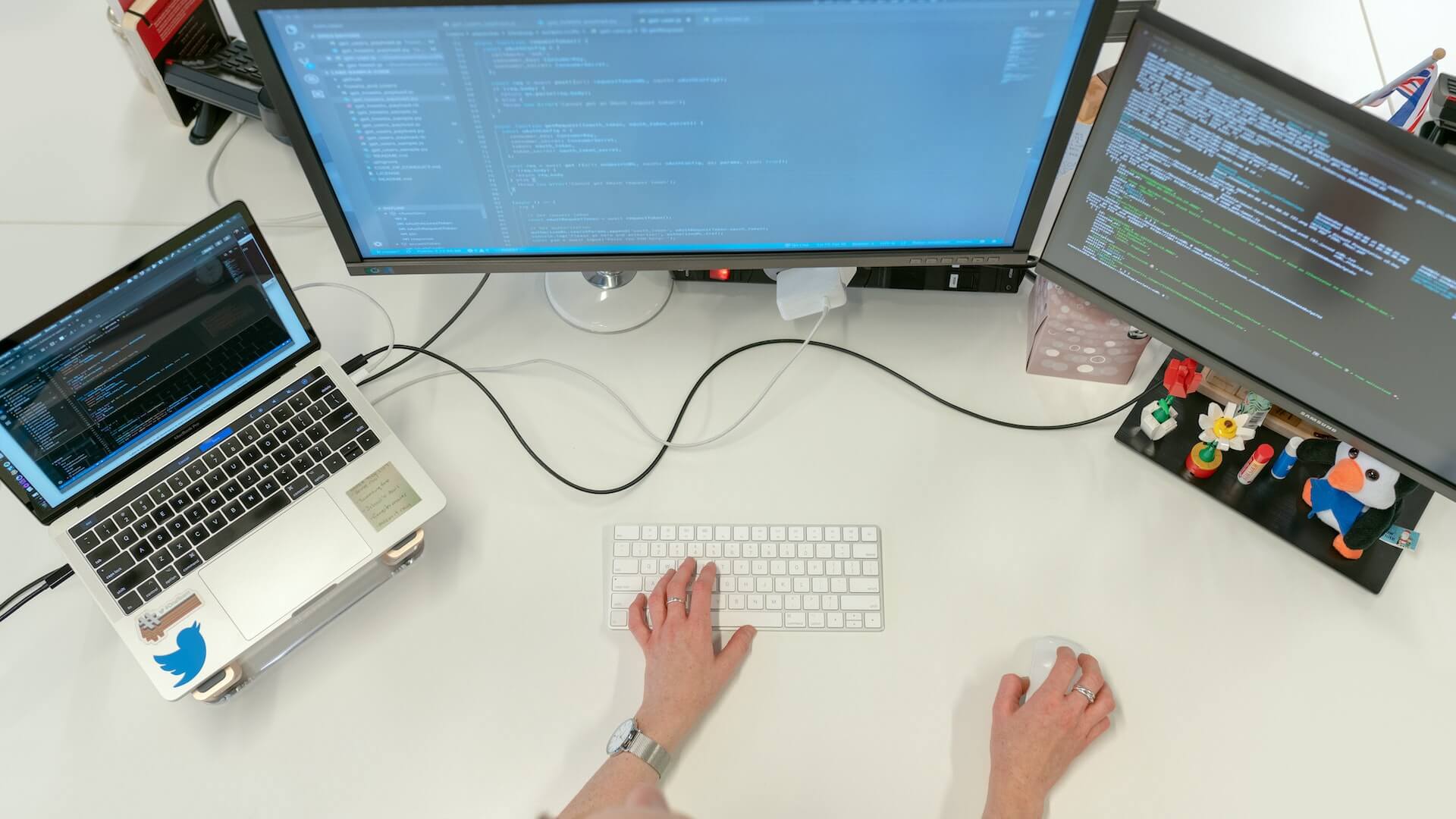Software engineering is a complex and ever-changing field that requires a great deal of discipline, knowledge, and experience to master. Whether you’re a seasoned professional or just starting out, there’s always something new to learn. With so many tools, languages, and frameworks available, it can be hard to keep up with the latest trends and best practices. In this post, we’re going to share some tips, tricks, and lessons learned that will help you master the art of software engineering. From managing your time and dealing with difficult stakeholders to learning new technologies and debugging complex code, we’ll cover all the bases to help you become a more effective and efficient software engineer. So, sit back, relax, and get ready to take your skills to the next level!
Introduction: The importance of mastering software engineering
Software engineering is a rapidly evolving field that lies at the heart of modern technology. From mobile apps to web development, software engineers hold the key to creating innovative solutions that shape our digital landscape. In today’s highly competitive market, mastering the art of software engineering is not just a desirable skill, but a crucial one for professional success.

The importance of mastering software engineering cannot be overstated. It is the foundation upon which the entire software development process is built. A strong understanding of software engineering principles allows engineers to design robust, scalable, and efficient solutions that meet the needs of users and businesses alike.
By mastering software engineering, engineers gain the ability to craft high-quality code that is maintainable, reusable, and easily understandable. This not only improves the efficiency of development but also reduces the chances of introducing bugs and errors into the system. In the fast-paced world of software development, where time is of the essence, the ability to write clean and efficient code can make all the difference.
Furthermore, mastering software engineering empowers engineers to tackle complex problems with confidence. It provides them with a systematic approach to problem-solving, enabling them to break down large, intricate tasks into smaller, manageable components. This not only allows for better collaboration within development teams but also enhances the overall efficiency and productivity of the software development process.
In addition to technical skills, mastering software engineering also involves developing soft skills that are essential for success in the industry. Effective communication, teamwork, and the ability to adapt to changing requirements are just a few examples of the non-technical skills that software engineers need to cultivate.
Developing a strong foundation: Essential programming languages and concepts
Developing a strong foundation is crucial for any aspiring software engineer. Just as a building needs a solid foundation to withstand the test of time, your programming skills require a strong base to support your growth and success in the field.
One of the first steps in building this foundation is to learn essential programming languages. While the specific languages you choose may vary depending on your goals and the nature of your projects, there are a few languages that are universally recognized as fundamental in the world of software engineering.
First and foremost, learning a language like Python can be incredibly beneficial. Known for its simplicity and readability, Python is widely used in various domains, from web development to data analysis and machine learning. Its versatility and large community support make it an excellent choice for beginners.
Another language worth considering is JavaScript. As the language of the web, JavaScript is essential for front-end development and enables dynamic and interactive web pages. It also powers popular frameworks like React and Angular, making it a valuable skill to have in your toolkit.
In addition to programming languages, it’s essential to grasp key programming concepts. These concepts, such as algorithms, data structures, and object-oriented programming, form the building blocks of software engineering. Understanding them will not only enhance your problem-solving skills but also enable you to write more efficient and maintainable code.
Sharpening your problem-solving skills: Effective strategies and techniques
Problem-solving is at the core of software engineering. As a software engineer, your ability to effectively analyze and solve complex problems is crucial. Fortunately, there are several strategies and techniques that can help you sharpen your problem-solving skills and become a master of your craft.

First and foremost, it is essential to approach problems with a structured mindset. Start by clearly defining the problem at hand and breaking it down into smaller, more manageable components. This allows you to focus on each individual aspect and prevents overwhelming yourself with the entire problem.
Next, leverage the power of abstraction. This involves identifying the essential components and disregarding unnecessary details. By abstracting the problem, you can simplify it and gain a clearer understanding of its underlying principles. This not only helps in finding a solution but also facilitates efficient communication with your team members or stakeholders.
Another effective strategy is to utilize problem-solving patterns. These patterns are proven approaches to solving common software engineering problems. Familiarizing yourself with these patterns, such as divide and conquer, dynamic programming, or greedy algorithms, can provide you with a systematic framework to tackle a wide range of problems.
Furthermore, it is important to cultivate a growth mindset. Embrace challenges and view them as opportunities for growth and learning. Don’t be discouraged by setbacks or failures, but rather see them as stepping stones towards improvement. Adopting a positive and determined attitude will fuel your problem-solving abilities and drive you towards finding innovative solutions.
Lastly, collaboration is key. Software engineering is rarely a solitary endeavor, and collaborating with others can offer fresh perspectives and insights. Engage in discussions, seek feedback, and actively participate in team brainstorming sessions. By collaborating with your peers, you can harness the collective intelligence and come up with solutions that are greater than the sum of their parts.
Embracing version control: The power of Git and its workflows
Git allows developers to track changes, collaborate effectively, and manage codebases with ease. By using Git, you can create branches to work on different features or bug fixes simultaneously, without disrupting the main codebase. This promotes a smooth workflow, as team members can work independently and merge their changes when ready.
One of the key advantages of Git is its ability to handle complex merging and branching scenarios. This is especially crucial when multiple developers are working on the same codebase simultaneously. Git’s merging capabilities help resolve conflicts and ensure that changes from different branches are integrated seamlessly.
Git also offers various workflows, such as the popular GitFlow model, which provides a structured approach to managing feature development, bug fixes, and release cycles. By utilizing Git workflows, software engineering teams can streamline their development process and maintain an organized codebase.
Furthermore, Git provides essential features like version tagging, which allows you to label specific points in your codebase’s history. This is useful for marking stable releases or important milestones, making it easier to refer back to specific versions when needed.
Embracing Git and its workflows not only enhances collaboration and code management but also improves project traceability and accountability. With Git, you have a comprehensive record of every change made to your code, enabling you to track issues, review changes, and revert to previous versions if necessary.
Writing clean and maintainable code: Best practices and coding standards
Clean code not only makes it easier for other developers to understand and collaborate on the codebase but also improves the overall quality, reliability, and scalability of the software.
To achieve clean and maintainable code, it is crucial to follow best practices and coding standards. These guidelines help ensure consistency, readability, and understanding across the development team. Here are some key tips to consider:
1. Consistent Formatting:
Adopt a consistent code formatting style throughout the project. This includes indentation, spacing, and naming conventions. Tools like linters and code formatters can automate this process.
2. Modular and Organized Code:
Break down your code into smaller, more manageable modules or functions. Each module should have a single responsibility and be easily understandable. This promotes code reusability and makes maintenance and debugging easier.
3. Meaningful Naming:
Use descriptive and meaningful names for variables, functions, and classes. Avoid ambiguous or misleading names that can confuse others reading your code. Well-named entities make the code self-explanatory and reduce the need for excessive comments.
4. Commenting and Documentation:
Document your code using meaningful comments. Explain the purpose, functionality, and any important details that may not be evident from the code itself. However, strive to write code that is self-explanatory and minimize the use of unnecessary comments.
5. Error Handling and Exceptional Cases:
Implement proper error handling and address exceptional cases. Handle errors gracefully, provide informative error messages, and use appropriate exception handling techniques. This ensures the software behaves robustly and avoids unexpected crashes or failures.
6. Testing and Test-Driven Development:
Write tests for your code to ensure its correctness and maintainability. Test-driven development (TDD) encourages writing tests before writing the actual code, guiding the design and improving code quality. Automated testing frameworks can assist in this process.
7. Refactoring:
Regularly review and refactor your code to eliminate duplication, improve efficiency, and enhance readability. Refactoring helps keep the codebase clean and maintainable over time.
Testing and debugging: Strategies for efficient and effective software development
Without proper testing, your software may contain bugs and errors that can lead to critical failures or user dissatisfaction. In this section, we will explore strategies for efficient and effective software testing and debugging.

First and foremost, it’s crucial to adopt a systematic approach to testing. This involves creating comprehensive test plans that cover various scenarios and edge cases. By identifying potential issues and testing them thoroughly, you can detect and fix bugs early in the development process, saving time and effort in the long run.
Automated testing tools can also greatly enhance your testing capabilities. These tools allow you to write test scripts that simulate user interactions and verify the expected behavior of your software. Automated tests can be executed quickly and repeatedly, providing instant feedback on the stability and functionality of your code.
In addition to automated testing, manual testing should also be part of your testing strategy. This involves conducting real-world tests by manually interacting with the software and observing its behavior. Manual testing allows you to uncover usability issues, identify corner cases that may not be covered by automated tests, and gain a deeper understanding of the user experience.
When it comes to debugging, having a systematic and methodical approach is key. Start by reproducing the issue and gathering relevant information such as error messages, logs, and user inputs. Use debugging tools provided by your integrated development environment (IDE) to step through the code, inspect variables, and identify the root cause of the problem.
Collaboration and communication are vital during the debugging process. Engage with your team members or seek help from experienced developers to leverage their expertise and fresh perspectives. Sometimes, a fresh pair of eyes can quickly spot the cause of a bug that you might have overlooked.
Lastly, make sure to maintain a mindset of continuous improvement. Learn from each bug encountered and use it as an opportunity to enhance your development practices. Keep a record of recurring issues and establish best practices to prevent similar bugs from occurring in the future.
Collaboration and communication: Working effectively in a team
Collaboration and communication are the cornerstones of working effectively in a team as a software engineer. In the fast-paced world of software development, it’s crucial to establish a strong and efficient communication channel within your team.
One of the most effective ways to foster collaboration is through regular team meetings. These meetings provide an opportunity for team members to share updates, discuss project progress, and address any challenges or roadblocks. It’s important to encourage an open and inclusive environment where everyone feels comfortable sharing their thoughts and ideas.
Utilizing collaboration tools can also greatly enhance team communication. Platforms such as Slack or Microsoft Teams allow for real-time messaging, file sharing, and project management capabilities, enabling team members to stay connected and informed throughout the development process. Additionally, version control systems like Git can facilitate seamless collaboration and code integration among team members working on the same project.
Moreover, establishing clear roles and responsibilities within the team can help streamline collaboration efforts. By clearly defining tasks and assigning ownership, everyone knows their responsibilities, reducing the chances of miscommunication or duplication of work. Regularly updating and tracking progress on shared project management tools, such as Jira or Trello, can further enhance transparency and accountability within the team.
Effective communication also extends beyond the team itself. Regularly engaging with stakeholders, clients, or other teams involved in the project is crucial for ensuring alignment and avoiding misinterpretations. Providing clear and concise updates, sharing progress reports, and seeking feedback can help maintain strong relationships and ensure that everyone is on the same page.
Continuously learning and staying updated: Resources and strategies for professional growth
One effective strategy for professional growth is to invest time in reading industry publications and blogs. There are numerous online resources, such as TechCrunch, Wired, and Medium, that provide valuable insights and updates on the latest advancements in software engineering. By regularly reading these publications, you can stay informed about emerging technologies, best practices, and industry trends.
Attending conferences, workshops, and webinars is another excellent way to enhance your knowledge and skills. These events offer opportunities to learn from industry experts, network with fellow professionals, and gain hands-on experience with new technologies. Make sure to research and choose events that align with your interests and career goals.
Participating in online communities and forums dedicated to software engineering is also beneficial. Platforms like Stack Overflow, GitHub, and Reddit allow you to connect with other professionals, seek advice, and share your expertise. Engaging in discussions and contributing to open-source projects can help expand your knowledge and improve your problem-solving abilities.
In addition to external resources, it is essential to take advantage of internal learning opportunities within your organization. Many companies offer training programs, mentorship initiatives, and knowledge-sharing sessions. Taking part in these activities can broaden your skill set and provide valuable insights into the specific technologies and processes used in your workplace.
Lastly, don’t underestimate the power of personal projects. Working on side projects or contributing to open-source projects can be a great way to explore new technologies, experiment with different tools, and deepen your understanding of software engineering concepts. These projects also serve as tangible evidence of your skills and passion, which can be showcased to potential employers or clients.
Dealing with challenges and setbacks: Lessons learned from real-world experiences
Dealing with challenges and setbacks is an inevitable part of the software engineering journey. Even the most skilled and experienced engineers encounter obstacles that can hinder progress and impact project timelines. However, it is how we handle these challenges and setbacks that truly defines our growth as software engineers.

One valuable lesson learned from real-world experiences is the importance of maintaining a positive mindset when faced with difficulties. It is easy to become discouraged or overwhelmed when encountering complex bugs or encountering unexpected roadblocks. However, by embracing a positive attitude and viewing challenges as opportunities for growth, engineers can approach problem-solving with renewed determination and creativity.
Effective communication is another crucial lesson learned from real-world experiences. Collaboration and clear communication among team members are key to overcoming challenges and setbacks. Regular team meetings, brainstorming sessions, and open channels of communication help ensure that everyone is on the same page and working towards a common goal. Additionally, fostering a supportive and inclusive team culture encourages engineers to seek help and share their knowledge, ultimately leading to more efficient problem-solving.
It is also important to recognize the value of learning from past mistakes and setbacks. Software engineering is a continuous learning process, and setbacks can often provide valuable insights for improvement. Engineers should take the time to analyze and reflect on what went wrong, identify areas for improvement, and implement changes to prevent similar issues from arising in the future.
Furthermore, the ability to adapt and be flexible is crucial when dealing with challenges in software engineering. Technology is constantly evolving, and engineers must be willing to embrace change and learn new skills to stay relevant. This adaptability allows engineers to navigate through unexpected challenges and setbacks with resilience and agility.
Conclusion
Software engineering is a constantly evolving field, and it can be challenging to stay on top of the latest tips, tricks, and lessons learned. However, by following the advice and lessons shared in this article, you can enhance your skills, improve your productivity, and become a master in the field. Remember, practice makes perfect, so keep pushing yourself to learn and grow as a software engineer. The possibilities are endless, and we can’t wait to see what you’ll achieve!



